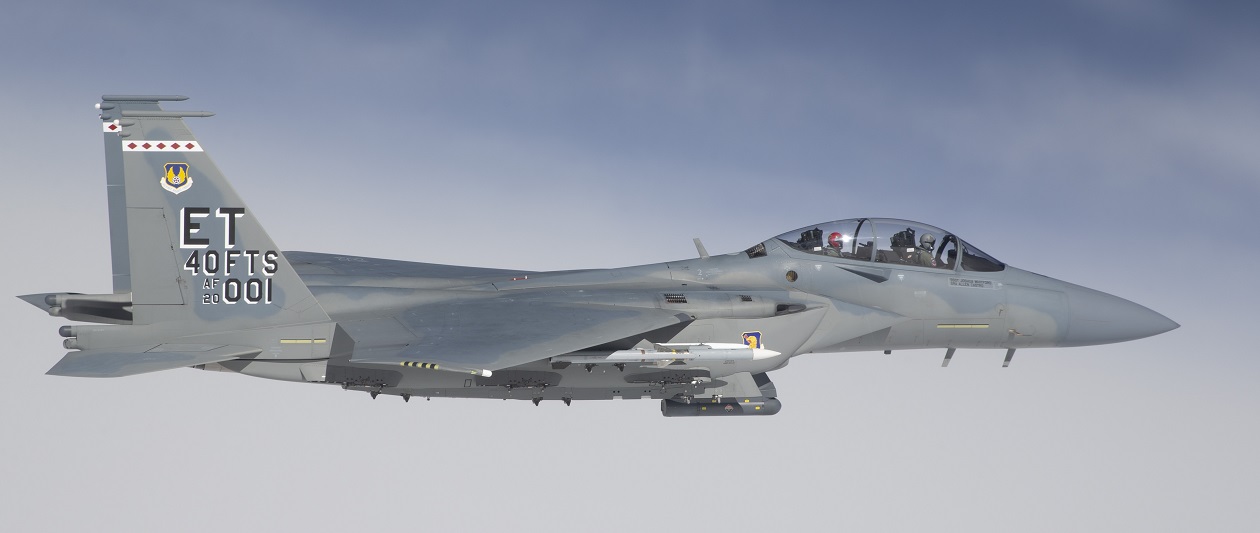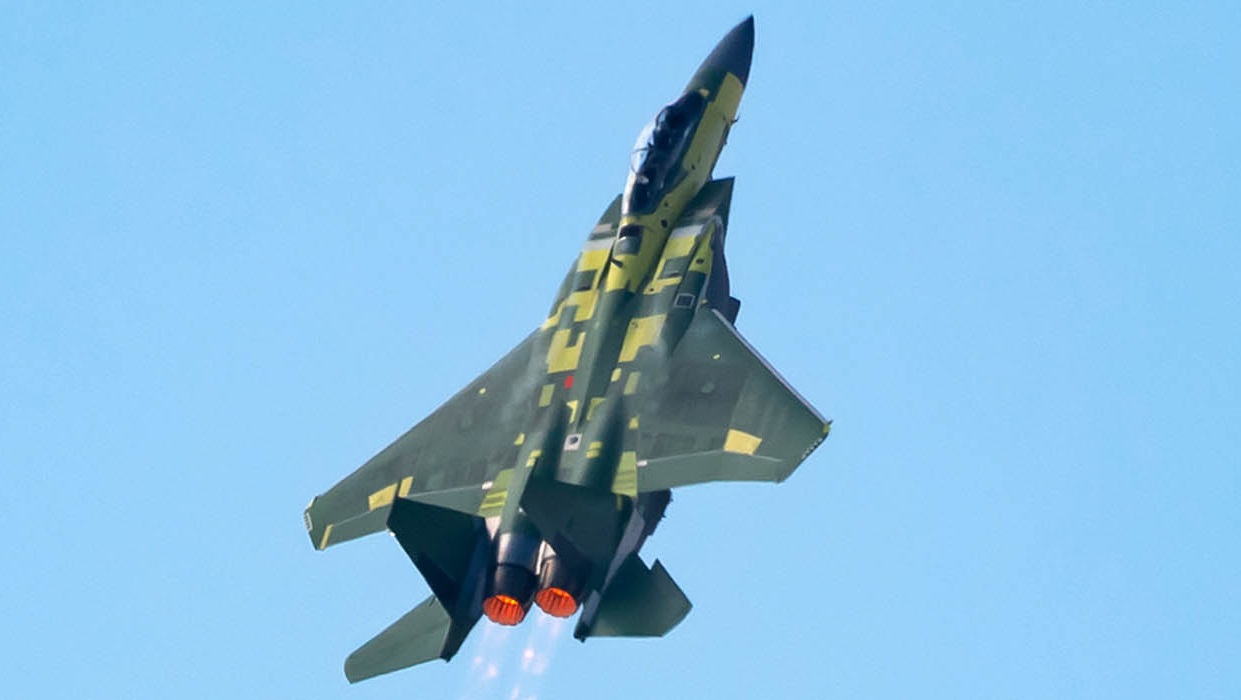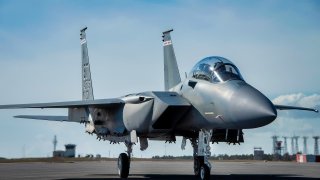F-15EX Eagle II: The Air Force's New Fighter Can Almost Hit Mach 3
The new Boeing F-15EX Eagle II fighter jet's potential to reach nearly Mach 3, announced at the Singapore Airshow, evokes memories of the golden era of jet technology.
Summary: The new Boeing F-15EX Eagle II fighter jet's potential to reach nearly Mach 3, announced at the Singapore Airshow, evokes memories of the golden era of jet technology. This speed is achievable in a "clean" configuration, without external add-ons, emphasizing the jet's aerodynamic efficiency. With twin GE F110-GE-229 engines providing 29,500 pounds of thrust each, the F-15EX's speed approaches that of historical aircraft like the SR-71 Blackbird, albeit with limitations. Combat conditions and munition speed ratings will restrict its operational speed. Despite these constraints, the F-15EX's engine power and design advancements signal a significant leap in fighter jet capabilities, marrying past achievements with modern technological prowess.
Mach 3: Boeing's F-15EX Eagle II Is a Speed Machine
Airplane performance specifications don’t often make the news anymore. The tempo of aerospace development has slowed since the earlier eras of jet technology, when speed and altitude seemed to be constantly falling, as experimental aircraft like the X-1, X-15, and A-12 took flight.
So, the chatter yesterday, that the new Boeing F-15EX can reach nearly Mach 3 harkened a bygone era, when the media and the public paid attention to things like an airplane’s top speed.
Mach 3 in a “clean” configuration
At the Singapore Airshow, on February 21st, Boeing’s F-15EX program manager boasted that the jet could reach nearly Mach 3 – but with some caveats; the near-Mach 3 speed is attainable only in a “clean” configuration. A clean configuration is when a jet flies without external pylons, munitions, or sensors – reducing angular surfaces and making the jet lighter and more aerodynamic.
“Yeah, it’s fast,” said Boeing’s Rob Novotny, formerly a US Air Force F-15 test pilot.
As Aviation Week reported, the “not-to-exceed speed of the twin-engined fighter is about Mach 2.9, or about 2,225 mph at sea level, Novotny said. "That puts the top speed of the Eagle II within about 80 mph of Mach 3, a speed only a few aircraft powered by gas turbines have achieved.”
Yet, Novotny emphasized that the F-15EX would not be approaching the Mach 3.2 top speed of the revered Lockheed SR-71 Blackbird.
“Remember, we’re testing [the F-15EX] when it’s clean,” Novotny said. “So it’s not carrying a bunch of stuff on it. And in that airshow configuration, with the two big GE [F110-GE-] 229 engines, it’s putting out 29,500 pounds of thrust per side.”
To be clear, 29,500 pounds of thrust per engine, or 69,000 pounds total, is a massive amount of thrust for a fighter jet. The Redstone rocket, which launched Alan Shepherd and Gus Grissom’s Mercury capsules into lower reaches of space, had 78,000 pounds of thrust – just 9,000 pounds more than the F-15EX.
But again, the F-15EX will not be reaching it’s speed potential in combat conditions. “In combat conditions, the speed of the F-15 will be dictated by the equipment it is carrying,” Aviation Week reported. For example, “a Raytheon AGM-88 High-speed Anti-Radiation Missile (HARM)...is not rated for speeds over Mach 1.2.”
“That’s why I don’t think we can get much higher,” Novotny said. “That will be the limiting factor on this plane: the stores speed limitation, not the plane itself.”

And as Forbes reported, “an additional factor which Novotny did not mention…was how much fuel the EX was carrying. The Eagle II can carry a reported 13,550 pounds of internal fuel. Cutting the airplane’s fuel load by half or more could save over 6,700 pounds, enough weight to make a substantial difference in the jet’s thrust-to-weight ratio.”

Even in “clean” configuration, achieving a Mach 2.9 speed, or beyond, would be extremely stressful to the F-15EX’s engines – which would likely reach their thermal limits at such speeds. “Even if they could push the EX beyond Mach 2.9, [the engines] would likely need to be refurbished after such a flight or at minimum have much reduced fatigue-life before replacement was necessary,” Forbes reported.
Regardless, it’s good to see a jet’s performance specifications making news again.
About the Author: Harrison Kass
Harrison Kass is a defense and national security writer with over 1,000 total pieces on issues involving global affairs. An attorney, pilot, guitarist, and minor pro hockey player, Harrison joined the US Air Force as a Pilot Trainee but was medically discharged. Harrison holds a BA from Lake Forest College, a JD from the University of Oregon, and an MA from New York University. Harrison listens to Dokken.


